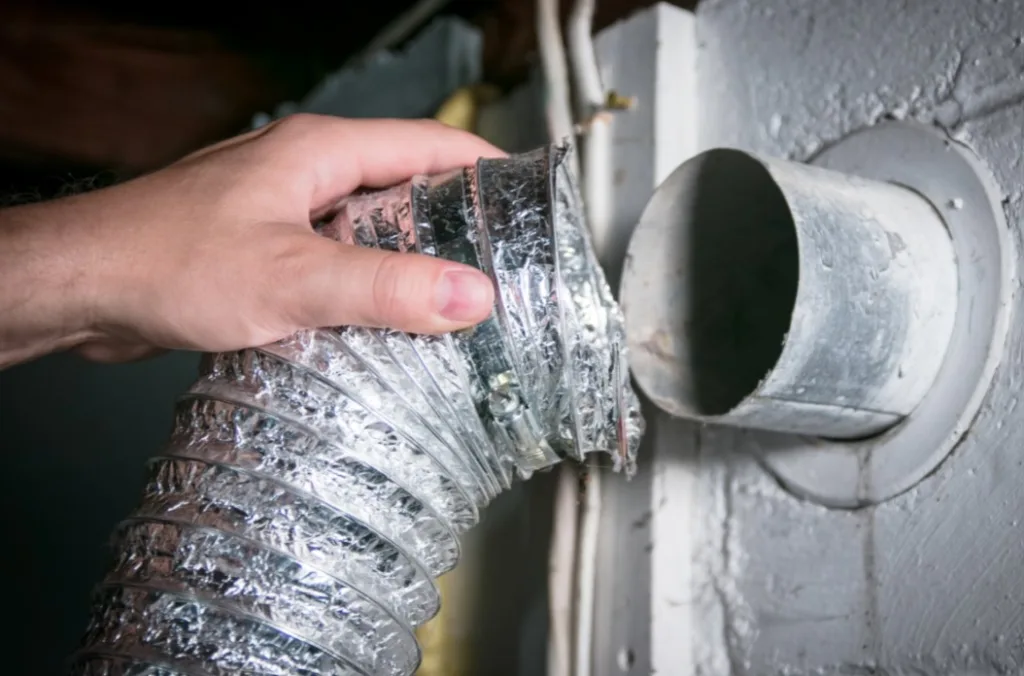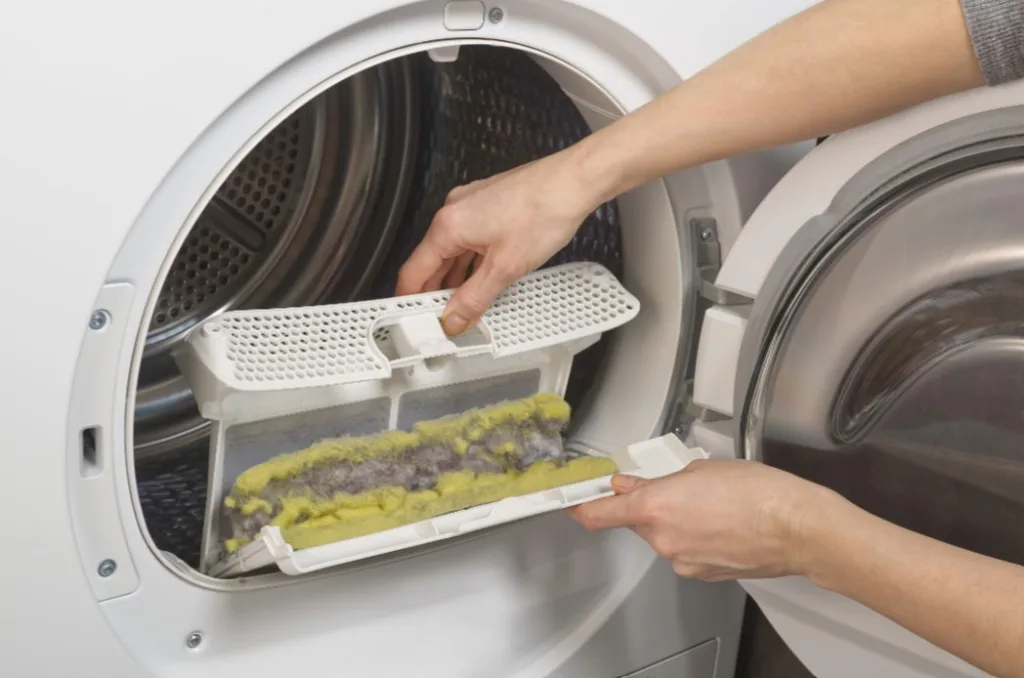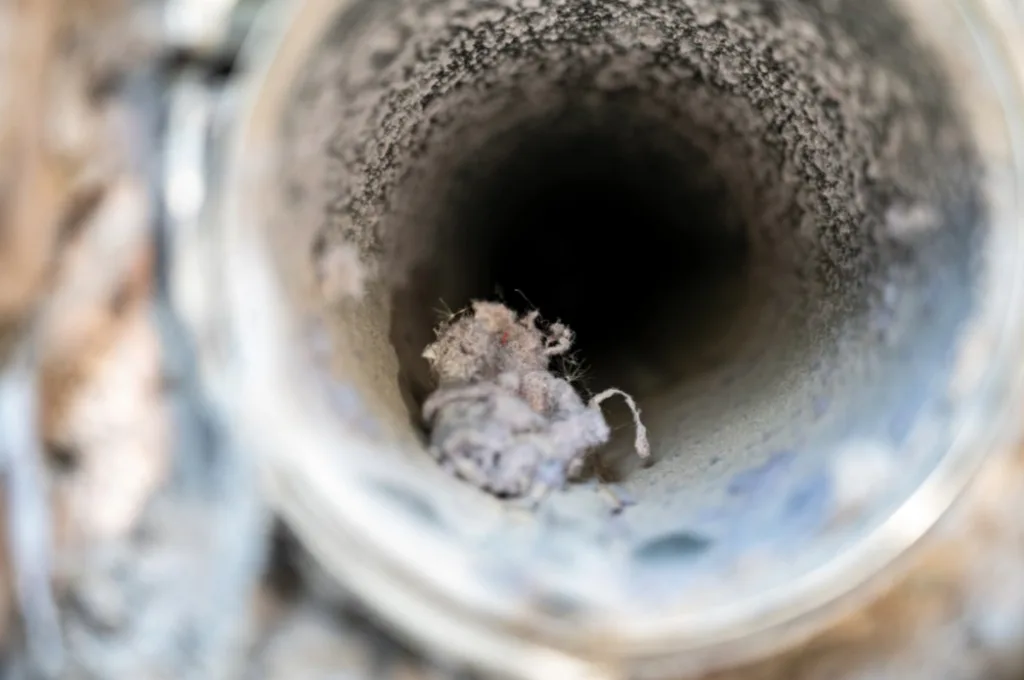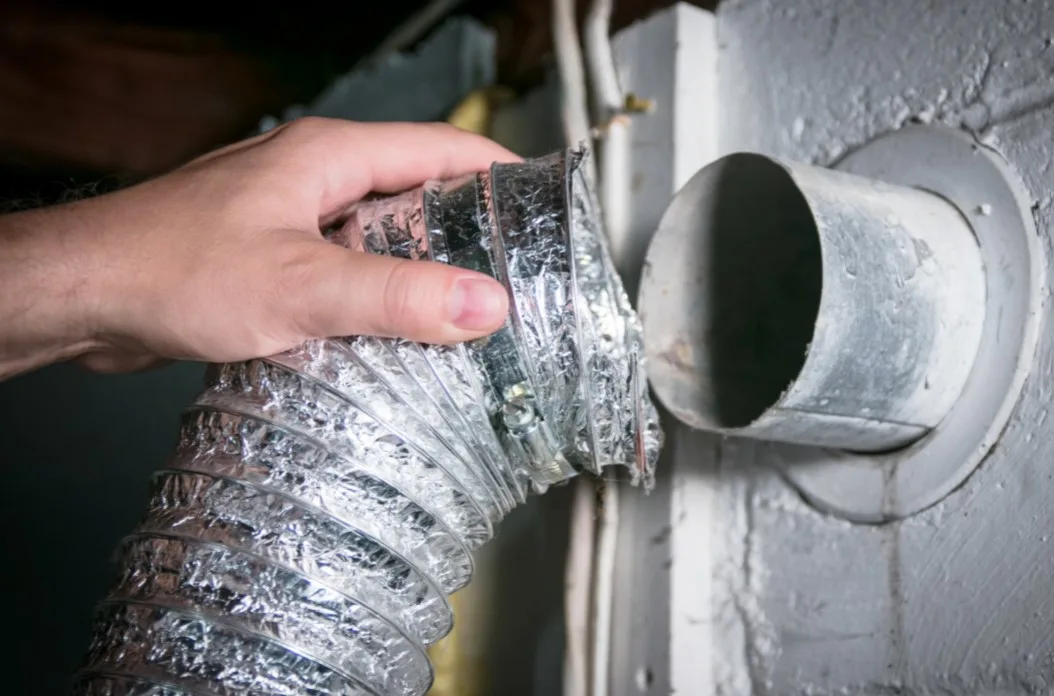
Mold problems in your home pop up from unexpected sources, and one of them could be your dryer vent. If not properly maintained, dryer vents can create the perfect environment for indoor mold growth. This household appliance could be contributing to an issue that can damage your home and put your family’s health at risk due to mold exposure.
At Patriot Property Restoration, we’ve seen faulty dryer vents lead to significant mold problems that lead to the need for our NJ mold removal services. It’s a common issue that gets overlooked when homeowners focus attention on more obvious sources like air conditioners, basements, or even bathrooms. It’s important to understand the link between your dryer vent and potential mold growth to help prevent it and ensure a healthier living space.
Malfunctioning or improperly installed dryer vents can lead to excess moisture, a prime culprit for mold development. Learn how to identify signs of mold related to your dryer vent, along with preventative measures and solutions, including professional mold remediation services when necessary.
Understanding Your Dryer Vent
You may not realize this, but a dryer vent, also known as a clothes dryer exhaust vent, is a critical part of your home’s ventilation system. This vent works as a passage, transporting the hot and moist air produced during the drying process from your clothes dryer to the outside of your home.
It really does two things. It enhances the efficiency of your dryer by effectively removing the moist air and this allows your clothes to dry faster than without one. It’s also important in maintaining the health of your home environment. By directing the moist air outside, it helps control indoor humidity levels, and this prevents conditions that encourage mold growth.
The Connection Between Your Dryer Vent and Mold
If you’ve noticed visible mold, a musty odor, or experienced health problems related to mold exposure in your home, check your dryer vent. If malfunctioning or improperly installed, could be contributing to excess moisture in your home, creating ideal conditions for mold growth.
Excess Moisture From Malfunctioning or Improperly Installed Dryer Vents
A dryer vent serves to guide hot, moist air from your dryer to the outside of your home. However, when a vent malfunctions due to blockages or is improperly installed, it can fail to channel this air out effectively. Instead, the moisture-laden air can seep into walls, ceiling tiles, or collect in areas such as air conditioning drip pans.
For example, a dryer vent should never be ducted to vent out into the crawl space or attic of your home, or allowed to expel moisture filled air into some other enclosed, indoor space. Without appropriate air circulation and ventilation, moisture will collect and condense in these spaces and encourage mold.
A common sign of a malfunctioning dryer vent is a dryer that takes longer than usual to dry clothes. This is because the blocked vent traps hot air inside the dryer instead of expelling it, resulting in damp clothes even after a full drying cycle. Over time, the trapped moisture can cause condensation, leading to water damage and, subsequently, mold growth.

How Excess Moisture Leads to Mold Growth
Mold thrives in moist environments. When excess moisture is present, such as from a malfunctioning dryer vent, it creates the perfect breeding ground for mold spores. These spores can rapidly multiply, leading to visible mold on surfaces like walls and ceiling tiles.
Understanding the connection between your dryer vent and mold is critical in maintaining a healthy home environment. Regular maintenance and inspections of your dryer vent can help prevent excess moisture and control mold growth, safeguarding both your home and your health.
Identifying Mold Problems Originating From Your Dryer Vent
When it comes to mold issues in your home, the source may not always be apparent. However, a faulty dryer vent is a common culprit that often goes overlooked. Knowing the signs and understanding how to inspect your dryer vent for potential mold issues can help you tackle the problem before it escalates.
Common Problems Associated with Dryer Vents
Despite the fact that you need them, a dryer vent can become a source of significant problems if it is not properly maintained. One common issue is clogging due to lint accumulation. When a dryer vent gets blocked, it can no longer effectively expel moisture. This leads to an increase in indoor humidity, creating an environment where mold spores can thrive.
Signs and Symptoms of Mold Problems
One of the first indications of a mold problem due to a faulty dryer vent is a persistent musty odor around your dryer or laundry area. This smell is a telltale sign of mold growth, which thrives in damp environments created by excess moisture from a malfunctioning dryer vent.
Physical symptoms can also indicate a mold problem. If you or your family members start experiencing health issues such as a runny nose, sneezing, itchy eyes, or skin irritation, these could be allergic reactions to mold spores in your home.
This mold growth isn’t just a structural issue—it’s a health concern as well. Continuous exposure to mold can lead to various health problems, especially for those with mold allergies or respiratory conditions. Symptoms can range from mild, such as sneezing and coughing, to severe, like shortness of breath and chronic sinusitis. Exposure to these mold spores can lead to various health effects, particularly allergic reactions in individuals sensitive to mold. Symptoms may include sneezing, runny or stuffy nose, cough, itchy eyes, throat, and skin, and in severe cases, difficulty breathing.
On the structural side, you might notice water leaks around your dryer or in your laundry room. These leaks could be due to condensation from hot, moist air escaping from a faulty dryer vent. Over time, this moisture can seep into walls, ceiling tiles, or cold surfaces causing visible mold growth.
Understanding your dryer vent, its function, and the potential problems associated with it is crucial in preventing these issues. Regular inspection and cleaning of your dryer vent can help control mold growth, reduce exposure to mold, and protect the health of your household.
Steps to Inspect Your Dryer Vent for Potential Mold Issues
- Check the Outside Exhaust Vent: Start by examining the outside exhaust vent while the dryer is running. The vent should expel warm, moist air. If not, there may be a blockage.
- Inspect the Dryer Hose: Check the dryer hose for any signs of damage, such as cracks or holes, where moisture can escape.
- Look for Moisture or Water Leaks: Examine the area around your dryer and walls for any signs of moisture or water leaks.
- Find Visible Mold: Look for visible signs of mold, particularly on walls, ceiling tiles, or cold surfaces in your laundry area.
- Smell for Mold: If there’s a musty odor around your dryer or laundry room, this could indicate mold growth.
If you identify any of these signs, you have to address the issue quickly. Regular maintenance, such as cleaning your dryer vent and repairing roof gutters regularly, can help prevent excess moisture and control mold growth. However, if mold has already developed, professional remediation may be necessary to ensure the mold is thoroughly removed and your home’s air quality is restored.
Solving Mold Problems Related to Your Dryer Vent
Understanding how to prevent and solve mold problems related to your dryer vent is important for a healthy, comfortable living environment. From taking proactive measures to knowing when to call in professionals for mold remediation, here’s what to do.
Preventing Mold Growth
Regular maintenance of your dryer vent is a key step in preventing mold growth. By cleaning your dryer vent routinely, you can avoid lint buildup, which can trap moisture and create an environment conducive to mold growth.
You must ensure proper ventilation. The dryer vent should effectively lead to the outside of your home, expelling hot, moist air and preventing condensation that could lead to mold growth.
Regularly inspecting areas around your dryer for water leaks is another important preventive measure. Prompt repair of any leaks can help avoid moisture buildup, a common cause of mold growth.
Be vigilant about repairing and cleaning roof gutters around your home regularly. This helps avoid water intrusion that can lead to higher humidity levels and potential mold growth on your property.
Solutions for Existing Mold Problems
If you’re already dealing with a mold problem caused by your dryer vent, here’s what you should do to address the issue.
Begin by cleaning the affected area with a mold-killing product.
Controlling indoor humidity levels can also help tackle mold issues. This can be achieved by increasing ventilation, fixing that dryer vent if it’s releasing moisture indoors, using dehumidifiers or air conditioners, and making your home less hospitable to mold.
Addressing the root cause of the problem is the most important thing to do and it usually comes down to moisture.

Calling in the Professionals
While minor mold issues can often be handled independently, more severe cases require professional help. If mold has spread over a large area, if there’s a persistent musty smell, or if family members are experiencing health issues such as persistent runny nose, itchy eyes, or skin irritation, call Patriot Property Restoration Services.
We offer comprehensive mold remediation services throughout New Jersey and we are based in Ocean County at the Jersey Shore. Our services include mold inspections, mold testing, and removal of mold. We help New Jersey homeowners with crawl space and attic evaluations, moisture solutions, sump pump & drainage systems, and crawl space encapsulation, all of which address and prevent mold problems.
Dealing with mold is not just about removal but also about prevention. Regular maintenance of your dryer vent and other potential sources of moisture in your home can go a long way in keeping your home mold-free.
Ensuring a Mold-Free Home
Recognizing the signs of mold problems related to your dryer vent and taking proactive steps to prevent and address these issues is essential for maintaining a healthy living environment. Whether it’s performing regular maintenance, ensuring proper ventilation, or seeking professional help for more severe cases, each measure plays a crucial role in combating mold growth in your home.
By staying vigilant and taking timely actions, you can protect your home and your family’s health from the detrimental effects of mold. Remember, the key to a mold-free home lies in prevention, maintenance, and prompt action whenever issues arise.

